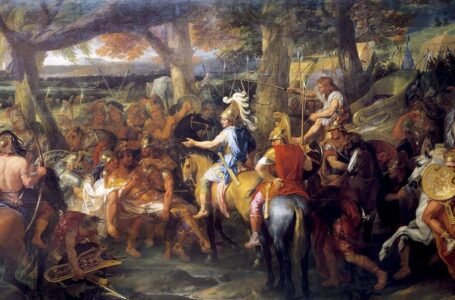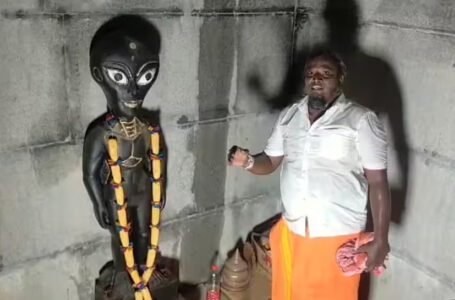Swadeshi Movement: Partition of Bengal by Lord Curzon

-Mili Joshi
In 1905, a single decision by one British Viceroy changed India forever. Lord Curzon, the Viceroy of India, drew a line through Bengal. He split it into two parts. He claimed it was for “administrative convenience.” But the people of Bengal and India knew better.
This was not just about maps or borders. It was about power. It was about divide and rule. And it sparked a fire that no one could put out, the Swadeshi Movement.
Bengal: A Land of Ideas and Revolt
Bengal, at that time, was huge. It included not only modern-day West Bengal and Bangladesh but also parts of Bihar and Odisha. It was the most populated province in British India. It was also a place where ideas were born.
Calcutta (now Kolkata) was the capital of British India. It was a hub of education and political debate. Many early nationalist writers, lawyers, and students came from Bengal. They wrote articles, formed groups, and questioned British rule.
This worried the British. Bengal was becoming the brain of India’s freedom movement.
The Divide and Rule Policy
Lord Curzon knew this. He claimed Bengal was too big to govern. So, he announced the partition of Bengal in July 1905. It came into effect in October.
Under this plan, Bengal was divided into two, East Bengal and West Bengal. East Bengal had a Muslim majority. West Bengal had a Hindu majority.
The real reason? The British wanted to break Bengal’s unity. They wanted Hindus and Muslims to distrust each other. They hoped this would weaken the growing nationalist voice.
Shock and Anger
When the news spread, people were shocked. They saw through the British plan. This was not about governance. It was about breaking their spirit.
Meetings were held in towns and villages. Students, lawyers, teachers, everyone joined in. They wrote petitions and sent protests to the government. But the British ignored them.
So, people found another way to fight back.
The Birth of Swadeshi
The word Swadeshi means “of one’s own country.” The idea was simple: boycott British goods and use Indian products instead. If Indians refused to buy British cloth and goods, the British economy in India would suffer.
Swadeshi became more than an economic tool. It was a way for ordinary people to fight back, without guns or violence. It was a silent weapon.
Leaders of the Movement
Many leaders emerged during this time. Lokmanya Tilak in Maharashtra, Lala Lajpat Rai in Punjab, Bipin Chandra Pal, and Aurobindo Ghosh in Bengal, spread the Swadeshi spirit.
Rabindranath Tagore, the great poet, wrote songs and poems to inspire people. He even tied Rakhi threads to bring Hindus and Muslims together in Bengal. He wanted to show that the British could not divide their hearts.
People gathered in huge processions. They burned foreign cloth in bonfires. They wore coarse, hand-spun khadi instead of fine British-made textiles. Shops refused to sell foreign goods. Students left government schools and colleges. They set up national schools and colleges instead.
Women Join the Fight
One of the most beautiful parts of the Swadeshi Movement was how it brought women into public life. Till then, many women stayed behind the walls of their homes. Now, they have come out.
They spun cloth. They picketed shops selling foreign goods. They sang patriotic songs at meetings. They taught children in national schools.
In Bengal, women like Sarala Devi Chaudhurani and Basanti Devi played key roles. They showed that freedom was not just men’s work.
Students and Youth
Students were the backbone of the movement. Many classes were boycotted in government schools and colleges. They joined protests, wrote slogans on walls, and organized secret meetings.
New national schools and colleges opened. Teachers taught about India’s glorious past and the dream of freedom. This was education with a purpose to build courage.
The Reaction from the British
The British did not sit quietly. They tried to crush the movement with force. They banned meetings. They arrested leaders. Newspapers that supported Swadeshi faced censorship.
Police beat up peaceful protesters. Students were expelled from schools. Many families paid a heavy price. But the flame did not die.
Instead, the repression made people angrier. Underground groups formed. Some young revolutionaries decided that peaceful protest was not enough. They took up arms and planned attacks on British officials. The seeds of India’s revolutionary movements were sown here.
A Movement Spreads
The Swadeshi idea did not stay in Bengal alone. It spread to other parts of India. People in Bombay, Madras, and Punjab joined the boycott. Swadeshi shops selling Indian goods popped up everywhere.
Even villages got involved. Farmers started using local cloth. Artisans got to work. Small industries came up. Swadeshi became a bridge between town and village.
A Cultural Awakening
The Swadeshi Movement was not just political or economic. It was cultural, too. People started celebrating Indian art, music, and crafts.
New songs, plays, and poems were written. Local industries like weaving, pottery, and handicrafts found new respect. People felt proud of what was “made in India.”
This cultural pride gave Indians something powerful, “self-belief”.
The End of Partition
The protests and boycotts went on for years. Finally, in 1911, the British government reversed the partition. Bengal was reunited.
But by then, something bigger had happened. India’s people had tasted the power of unity. They realized they could challenge an empire, not with weapons but with their own choices.
The Legacy of Swadeshi
The Swadeshi spirit did not die with the end of Bengal’s partition. It lived on. Gandhi’s later movements, Non-Cooperation, Civil Disobedience, carried the same idea forward.
Boycott foreign. Build local. Be proud of who you are.
The simple spinning wheel became a symbol of freedom. The Swadeshi shops grew into small industries. Many freedom fighters of the next generation took their first steps during this time.
Why It Matters Today
The Swadeshi Movement teaches us many lessons. It shows that true freedom is not just about removing rulers. It is about building self-reliance. It is about trusting our people and products.
It reminds us that unity can break any power that tries to divide us. It reminds us that ordinary people, students, women, farmers, and traders can change history with simple acts of courage.
Final Thoughts
When Lord Curzon drew that line through Bengal, he thought he was weakening India. Instead, he woke it up. He gave people a reason to stand together.
The Swadeshi Movement turned boycott into a weapon. It turned a spinning wheel into a symbol of pride. It turned millions of ordinary Indians into quiet revolutionaries.
Today, we buy local to support our economy. We celebrate our crafts and industries. Every time we do, we carry forward the same Swadeshi spirit.
That spirit tells us: freedom is not given. It is made thread by thread, act by act, by people who refuse to be divided.


